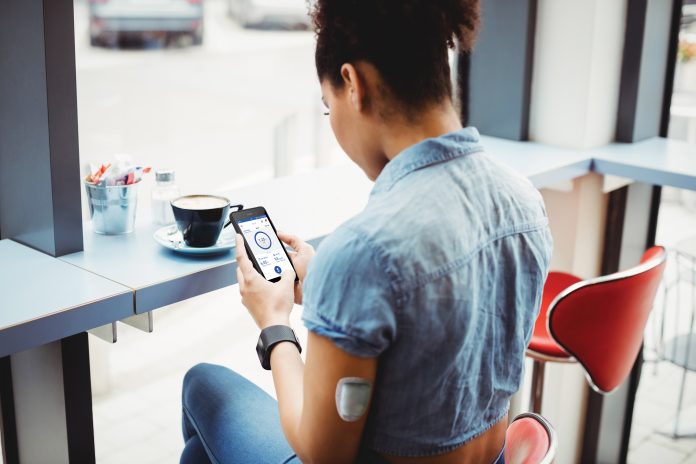Hjalte Hojsgaard, Insulet International, highlights why choice of insulin delivery devices is important, and why the promise of this life-changing technology is not yet fully utilised in UK diabetes care
Type 1 diabetes (T1D) is a lifelong condition not linked to weight or lifestyle. People with T1D require treatment with insulin that involves several injections each day which must be managed alongside mealtimes and fit around their school or work schedule and social activities. A person with T1D may need up to five insulin injections every day*, or 1825 injections each year for the rest of their life. (1) This is challenging and in 2018 fewer than 30% of the 400,000 people with T1D in the UK were hitting the targets for glucose control recommended by the National Institute for Health and Care Excellence (NICE). (2)
The promise of continuous insulin delivery
Insulin pumps offer an alternative to the burden of multiple daily insulin injections (MDI). These are small, wearable computerised devices that deliver insulin continuously into the layer of fat just below the skin. Insulin pumps allow people with T1D to programme their insulin doses to match their needs and to fit their daily schedule. The ultimate goal is to mimic how a normal pancreas would release insulin into the body. Compared to MDI, insulin pump use is associated with a better quality of life and improved glucose control for people with T1D, enabling around 80% of them to reach their target goals for glucose management. (3) This means less risk of long-term complications, such as heart and kidney disease, (4) as well as less anxiety about episodes of hypoglycaemia (5) when glucose levels can drop dangerously low.
The choice of insulin pump is critical, as each person with T1D has unique needs within their daily life with diabetes. This includes the choice between so-called tethered pumps, which deliver insulin via a tubing set that connects the pump to the site of infusion, and patch pumps which sit directly on the skin at the infusion site, without the need for tubing sets. Both types of insulin pump can solve many of the problems of living with diabetes and NICE support their use in people with T1D. A feature of patch pumps is that they avoid the common problems of snagging, kinking or blocking of tubing sets, that can interrupt insulin flow and disrupt glucose control, (6) and can be associated with an improvement in users perceived control over their diabetes. (5)
The reality of insulin-pump choice
Despite the acknowledged benefits of insulin pumps, a 2018 audit of diabetes services in England and Wales reveals that insulin pump therapy is not a choice for many people with T1D. (3) Although in some areas more than 40% of people with T1D are provided with an insulin pump, in others it is less than 5%. Nationally, across England, 18% of people with T1D are on insulin pump therapy, (3) whereas in Scotland and Northern Ireland this falls to 11% and 10%, with Wales reporting only 6% provision. (7) The reasons for this variation are not clear, although cost is likely to be a factor.
When insulin pumps are made available, it is vital that patient choice of device is maximised. Choice of technology means that people with T1D can adapt to their own unique challenges of daily life with diabetes, today and in the future. Diabetes technology develops rapidly, and device choice must match this evolution. However, managing the clinical resources needed to support a selection of pump systems can mean that many diabetes services will offer only a limited choice of devices. This lack of access and choice across the UK has motivated people with diabetes and healthcare professionals (HCPs) to urge that insulin pump therapy be offered to everyone with T1D who meet NICE criteria.
“I think it is incredibly important that people with diabetes can choose their own healthcare devices because it helps you to stay motivated if you make the choice!” Myrthe H. Diagnosed with Type 1 diabetes at age five years.**”
Evolution in diabetes technology
Addressing the tensions between need, access and choice is imperative, given the capabilities of current insulin delivery technologies and the benefit they bring to people with T1D. The tubeless Omnipod DASH® Insulin Management System is one of the most-recent pumps available. It consists of a small, lightweight, waterproof Pod§, that can deliver up to 72 hours of uninterrupted insulin and is controlled remotely by a smartphone-like Personal Diabetes Manager (PDM)¶. The Pod’s auto-insertion feature means users never need to see or touch an insertion needle. It is an effective solution for a person with T1D that can seamlessly integrate into their life and eliminate the burden of syringes, insulin pens and tubing sets. The Omnipod DASH® System Pods are sold in the UK under a pay-per-use model, essentially providing a new insulin pump (the Pod) every three days***. The upfront investment relates to the handheld PDM which is approximately 2% of the costs of using the Omnipod DASH® System over a four-year period. This pay-per-use model may reduce the financial impact of switching or changing systems during the four-year period. This provides flexibility for HCPs and people with diabetes, facilitating an informed choice about continuing with Pod Therapy based substantially on treatment needs rather than the financial impact of such a change in treatment.
“When I first started on Omnipod® I felt like I could be more spontaneous and free again” Lea R, Type 1 diabetes since 2014.**”
Greater access and choice of insulin delivery devices are a stated priority for improving the health and wellbeing of people with T1D. Diabetes is not static, it changes over time and diabetes technology is evolving in a way that meets the current and future needs of people with diabetes and the HCPs who support them. Adapting to this future can start today.
* Mean calculation for most individuals with type 1 diabetes in three days use of insulin via multiple daily injections.
** This user testimonial is an account of the individual’s response to treatment with the Omnipod® System. User experience may vary, please speak with your healthcare professional.
*** Up to 72 hours of continuous insulin delivery.
§The Pod has a waterproof IP28 rating for up to 7.6 metres for 60 minutes. The Personal Diabetes Manager is not waterproof.
¶At start-up, the Pod and Personal Diabetes Manager must be adjacent and touching. During normal operation, the Personal Diabetes Manager must be within 1.5 metres of the Pod.
References
- Chiang JL et al; Type 1 Diabetes Sourcebook Authors. Type 1 diabetes through the life span: a position statement of the American Diabetes Association. Diabetes Care 2014; 37:2034–2054
- National Diabetes Audit, 2017-18. England and Wales. June 2019.
- National Diabetes Insulin Pump Audit, 2017–2018. England and Wales. August 2019.
- Nathan DM et al. Diabetes Care 2024; 37: 9-16
- Polonsky WH et al. Diabetes Technol Ther. 2016; 10: 664–770.
- Pickup JC et al. Diabetes Technol Ther. 2014; 16: 145–149
- ABCD/DTN-UK. Best Practice Guide: Continuous subcutaneous insulin infusion (CSII). A clinical guide for adult diabetes services. 2017
Please note: This is a commercial profile
INS-ODS-07-2020-00097v1








